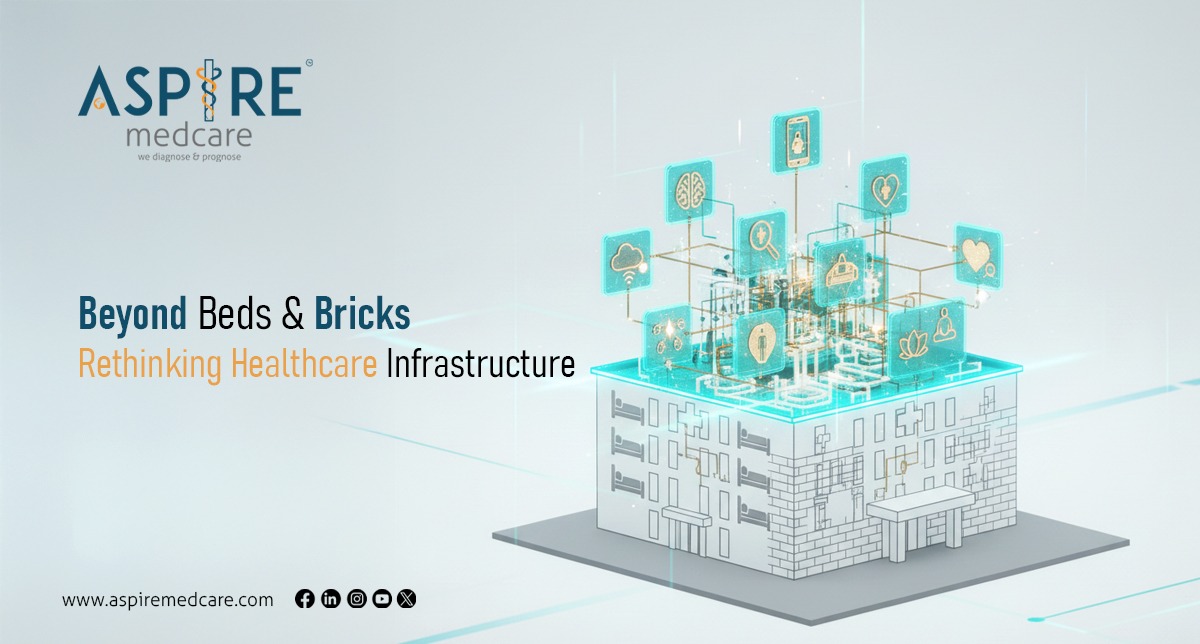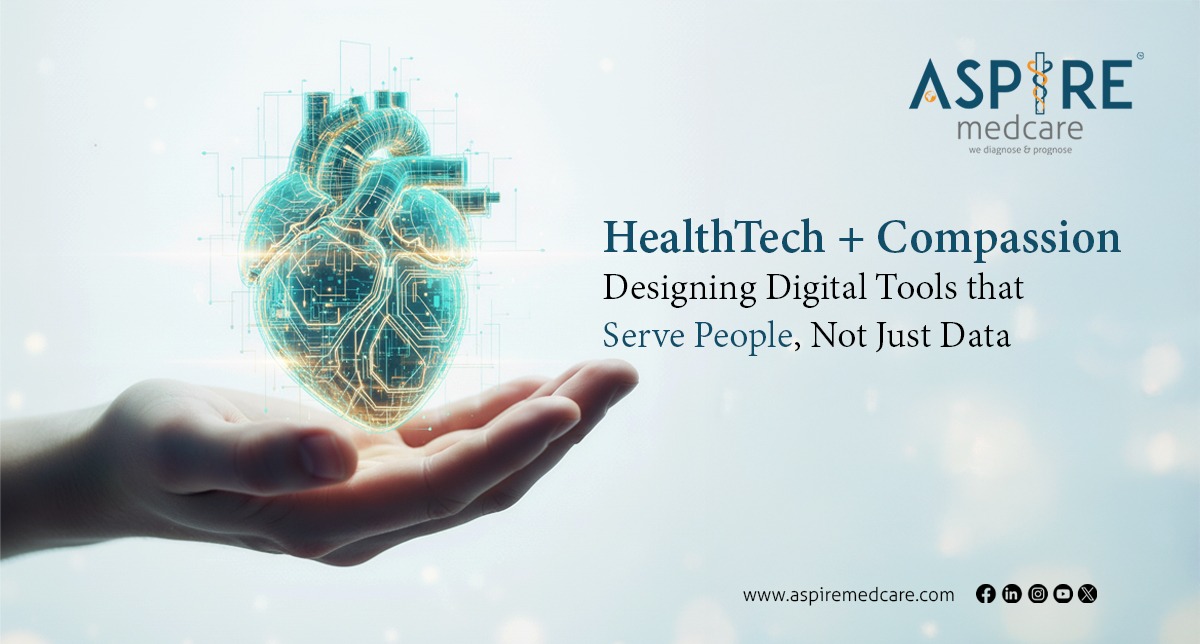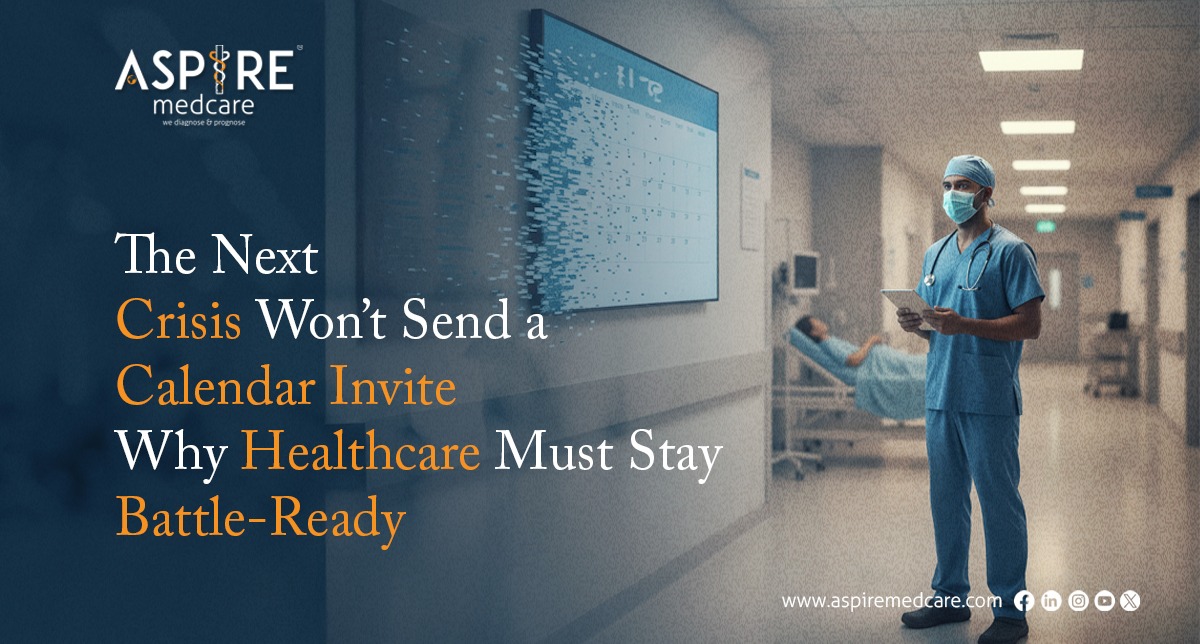Beyond Beds & Bricks: Rethinking Healthcare Infrastructure

When we think of hospitals, the first question that usually comes up is, "How many beds does it have?? For decades, bed count has been seen as the simplest way to measure a hospital’s strength.
A hospital isn’t just about how many patients it can house. It’s about whether it can respond to change, stay ready for the future, and still hold on to the human side of care.
At Aspire Medcare, we believe true infrastructure isn’t measured in size, but in how deeply it serves those who depend on it.
It must be measured by how well it supports patients, doctors, and families through care that adapts, comforts, and heals. Hospitals of tomorrow will not just be about bricks and beds — they will be about people, trust, and resilience.
The Transition From ICU Design to Tele-ICU Readiness
The ICU is the heart of every hospital. But designing one today requires far more than arranging beds around machines. Modern ICUs need modular layouts that allow for scaling up in emergencies, integrated infection-control measures, and tele-ICU readiness so expertise can travel beyond walls.
During COVID-19, we learned the hard way that critical care cannot remain confined to physical presence. Hospitals that had invested early in tele-ICU setups were able to extend specialized care across distances, saving more lives. Tomorrow’s healthcare infrastructure must be built with this flexibility in mind — not as an afterthought, but as a default.
Creating Healing Environments: More Than Four Walls
Care in healthcare extends far beyond medical charts and clinical procedures. People don’t heal only because of medicines or machines. They heal because the space around them feels safe, calm and comforting. Sunlight coming in, fresh air passing through the room, or a quiet space with a bit of greenery—such simple things can ease anxiety and help the body rest.
We must also understand that privacy is not a privilege. It’s the basic respect every patient deserves.
Aspire Medcare approaches hospital design with a simple philosophy: a healing environment heals faster. The best hospitals in the world are learning this — investing in softer lighting, larger windows, personalized spaces, and mindful noise control. The Indian healthcare sector can no longer afford to treat these as “aesthetic extras.” They are essentials.
Space Utilization: Turning Square Feet into Patient Experience
A hospital’s blueprint is not just about maximizing square footage. It’s about asking: how will a patient feel when they enter this space? Will a worried family find clarity in the layout, or will they get lost in endless corridors? Will a nurse have to run 100 meters to reach life-saving equipment, or will it be within arm’s reach?
Consultancy in space utilization is no longer a back-office service — it is central to delivering patient experience. At Aspire Medcare, we work with hospitals to rethink layouts: from waiting rooms designed to reduce anxiety, to wards configured for both efficiency and compassion. A few thoughtful design shifts can turn “square feet” into “moments of trust.”
The “Future-Proof Hospital” Concept
The most dangerous assumption in healthcare is that today’s infrastructure will meet tomorrow’s needs. Pandemics, climate-related health crises, and rapid tech disruption have proven otherwise. A “future-proof” hospital is not about overbuilding; it’s about building smart.
Future-proofing means:
-
Flexibility: Hospitals can’t afford to be rigid. A ward that treats general patients today might need to serve as an ICU tomorrow. Spaces must be built to adapt quickly, so care is never compromised when demand surges.
-
Tech-readiness: Healthcare is digital at its core now. From remote monitoring to data-driven diagnostics, hospitals need to be wired for technology—ready not just for today’s tools, but for the breakthroughs still to come.
-
Sustainability: A hospital should feel alive, not mechanical. Sunlit corridors, fresh air, and spaces softened with greenery don’t just save electricity—they ease stress, calm anxious families, and help patients heal faster. When the building itself breathes, recovery feels a little lighter.
-
Resilience: In a crisis, what matters most is that care never stops. A resilient hospital is one where oxygen flows, lights stay on, and patients feel safe—no matter what’s happening outside.
At Aspire Medcare, we see future-proofing as a moral responsibility. Because when the next crisis comes — and it will — the best hospitals will be those that were ready, not just reactive.
Beyond Infrastructure: Building for Humanity
The conversation about healthcare infrastructure often gets buried in statistics — number of beds, number of machines, number of buildings. But numbers don’t comfort a frightened patient. They don’t reassure a family waiting outside the ICU doors.
At Aspire Medcare, we see future-proofing as a moral responsibility. Because when the next crisis comes — and it will — the best hospitals will be those that were ready, not just reactive.
What does? A space that feels safe. A ward that respects privacy. A layout that makes care accessible. A design that places humanity, not just hardware, at the center.
This is the ethos that drives Aspire Medcare’s consultancy. For us, every square foot of a hospital is an opportunity to restore dignity, trust, and compassion. Because healthcare is not just about saving lives — it is about making every life feel valued.
To Wrap It Up
Hospitals are no longer defined merely by the number of beds they have, they are also defined by the extent of care and compassion they treat their patients. The real work of healthcare goes way beyond beds and bricks wherein it is important to design systems and spaces that adapt, comfort and endure. At Aspire Medcare, we partner with institutions to rethink healthcare infrastructure — not as static construction, but as living, breathing ecosystems built for humanity.
Because, in future hospitals will no longer be known for the space where patients go to heal. They will be known as spaces where hope learns to breathe.


